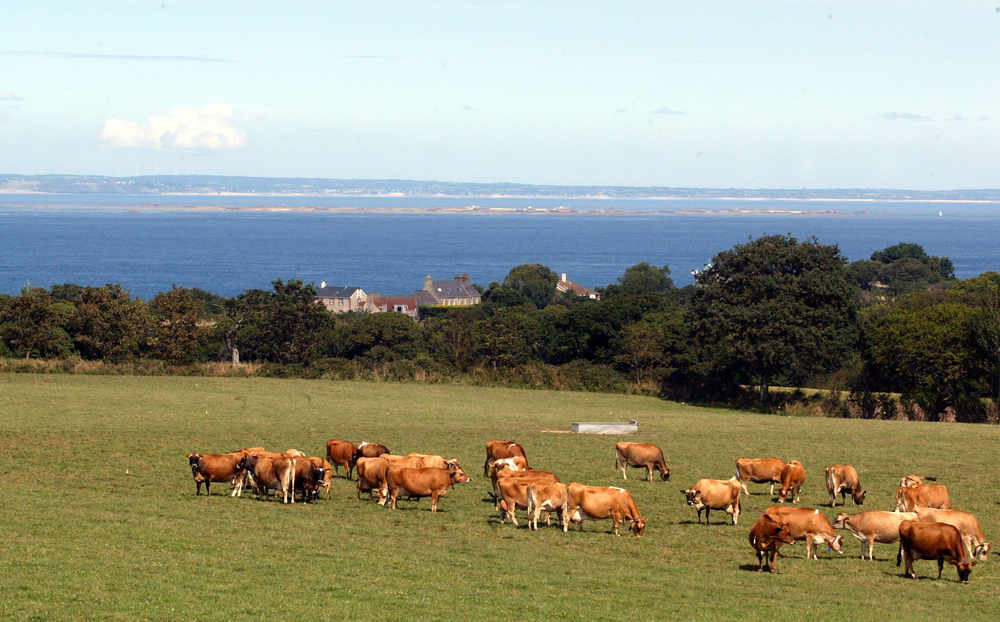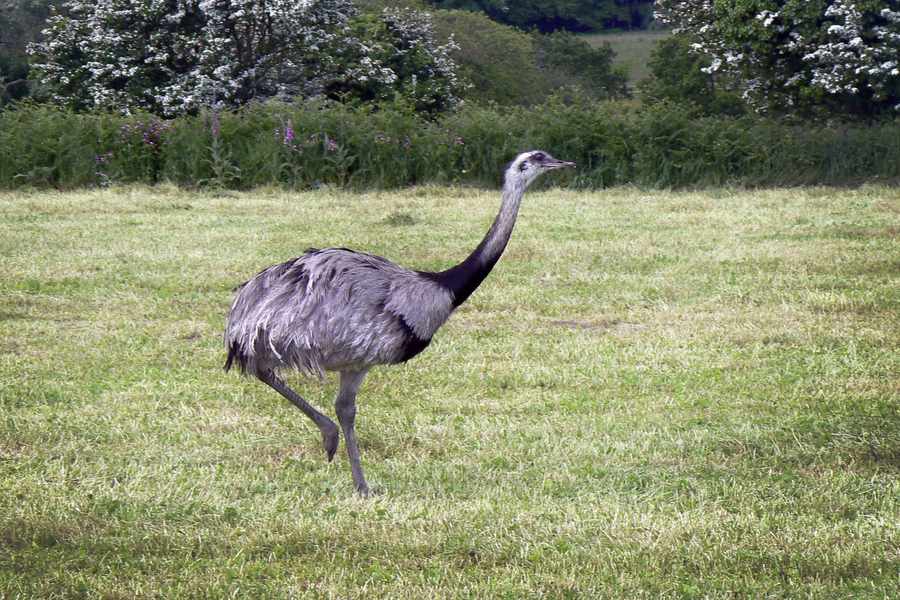Rosie-Lee was one of three rheas – ostrich-type birds originating from South America – which bolted from their farm on Friday night after being spooked by a herd of errant cows.
Her two companions – Marty and 15-year-old Rembrandt – were found a short distance away the following day after her owner and eight others launched a search party.

But Rosie-Lee, who is described as about 4½-ft tall, grey, with long thin legs and a long neck, was this morning still on the run somewhere in the wilds of the northern parishes.
Seamus Nicolle, who looks after the birds at the family farm near the former B&Q site in St John, said: ‘The cows came from another farm – goodness knows how many there were. There could have been 100. The birds just got spooked and bolted through the fence. Any animal would be scared if that many cows came towards them.’
He added: ‘There were nine of us out on Saturday but these birds are very quick. And if they are lying down because they are tired then the only w ay you would see them is from the air.
‘At this time of year she could survive in the wild, as long as she had a supply of water. They eat grass, so she would have enough food.’
- A rhea is a flightless bird which tends to be silent, but males can be rather noisy when searching for a mate.
- Last summer a rhea called Chris belonging to a former Page 3 girl escaped and set up home on a golf course in Hertfordshire. The rhea was later shot dead by a gamekeeper.
- Rheas are large birds and can weigh up to 40 kg. They can reach speeds of up to 50 mph faster than the Islands speed limit.
- Unlike most birds they only have three toes. They eat plants and grass and also enjoy the occasional beetle or grasshopper.[/breakout]
Asked if the bird posed a threat to humans, Mr Nicolle, who has kept rheas since 2002, replied: ‘The males can be quite dangerous when they are breeding. But she isn’t dangerous – she would be petrified and would just run off.’
There have been three reported sightings of Rosie-Lee, including one close to Lyndale Sports on Rue de Grand Jardin in Trinity.
Duty Centenier Jonathan Plunkett said that they had received about a dozen reports of the birds during the weekend.
It is not the first time that a rhea has gone on the run in Jersey. In 2011 a near 6-ft tall bird was found by his owner almost three weeks after escaping from his home in a field near Bonne Nuit.
It was captured in a dramatic rescue which ended with the bird plunging almost 50-ft down an embankment and running into the sea.
Speaking at the time, his owner said: ‘We dragged him out, wrapped him in our coats and took him back up the cliff.’
Anyone who sees Rosie-Lee is being asked to phone Mr Nicolle on 864197.

AN ostrich-type bird which vanished in 2011 was found alive after being on the run for nearly three weeks.
The 6-ft tall Argentinean rhea had been stretching his long legs around the St John countryside after bolting from a field near Bonne Nuit in February.
But the feathered fugitive was finally captured in a dramatic rescue which ended with the bird plunging 50 ft down a cliff and running into the sea.
The bird’s escapade came to an end when he was spotted by a dog walker among the trees and shrubs above La Saline quarry on the north coast.
The witness then contacted the honorary police, who in turn notified the bird’s owner, Peter Quimby.
‘Me and a mate got up there straight away. We chased him along the cliff and we thought we had cornered him,’ said Mr Quimby.
‘He then fell off the cliff – he must have dropped about 50 ft – and then he ran on to the beach and straight into the sea.
‘He kept on getting hit by waves and he was pinned down. We dragged him out, wrapped him in our coats and took him back up the cliff,’ he added.
The bird was captured just days after Mr Quimby told the JEP that the four-year-old bird could have died after escaping from the field where he lived with his partner and two chicks.
Mr Quimby added: ‘I was beginning to lose hope of finding him alive. He was very hard to spot and blended into the countryside very well, and even when we got close to him he was difficult to see.
‘But I am pleased to have found him, and he got back with his missus in time for Valentine’s Day. He’s got a bit of a limp but generally he’s okay.’






